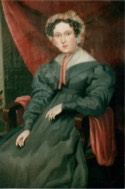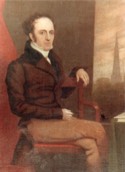Family Card - Person Sheet
Family Card - Person Sheet
Birth9 April 1799, Exeter, Devon, England546
Death20 December 1851, Brown Street, Salisbury, Wiltshire, England Age: 52
MemoAcute bronchitis & croup.
BurialCloister Green Salisbury Cathedral, Salisbury, Wiltshire, England
FatherJames MARSH , 575
MotherElizabeth , 576
Spouses
1William OSMOND 
 , 321
, 321

 , 321
, 321Birth17 August 1790
Death10 July 1875, 113 Exeter Street, Salisbury St Martin, Wiltshire, England Age: 84
BurialCloister Green Salisbury Cathedral, Salisbury, Wiltshire, England
OccupationMason
FatherThomas OSMOND , 323 (1752-1833)
MotherBetty KELLOW , 324 (1755-1841)
ChildrenWilliam , 338 (1821-1890)
Elizabeth Susan , 344 (1822-1900)
Louisa , 348 (1823-1873)
Alfred , 349 (1824-1826)
Emma Charity , 350 (1826-1862)
Arthur , 357 (1828-1895)
Alfred Thomas , 413 (1829-1901)
Henry James , 435 (1830-1871)
Charles Marsh , 436 (1832-1911)
Herbert , 438 (1833-1890)
Lucy Jane , 439 (1834-1850)
Edward , 440 (1836-1856)
Agnes Peirce , 441 (1838-1919)
Ellen , 442 (1839-1917)
Walter Marsh , 307 (1840-1894)
Gertrude Mary , 444 (1842-1856)
Notes for William (Spouse 1)
William was a stone mason and his indenture of 5th February 1807, when he was only aged 17, states that he was 'bound' to Mary Croome, widow of Dinton, and William Croome of Fisherton Anger, as a stone mason's apprentice for a period of seven years. He was appointed as a mason to Salisbury Cathedral in 1818. William was also a lay vicar at Salisbury Cathedral, where he was married. The 1861 census records that William employed twelve men and one boy.
Emily (nee Osmond) Miles in her book on the Osmond's describes William as follows: 'Like other members of his family, William was very musical and one occasion played the fiddle while seven couples of his children danced,' William and Charity moved from 13 St John's Street to 'The Priory' in Brown Street some time in 1826.
Whether you are an inhabitant or a visitor to Salisbury, you may have seen the restored stone- carving ‘Osmond, statuary and Mason’ above doorway to King’s Arms in St John’s Street. At the age of 16, he was apprenticed for seven years to William Croome a stonemason of Fisherton Anger with whom he received a premium apprenticeship. This may well be reflected in the fact that he was appointed stonemason to Salisbury Cathedral in 1818 when only aged 28.
William married Charity Marsh (from Exeter) at the cathedral on 5th January 1820. They were to have no less than 17 children the first four of whom were born at St John’s Street. By January 1826, the enlarged family had moved to ‘The Priory’ in Brown Street (near the corner of St Ann’s Street) where the family lived for nearly 50 years while the business continued at No.13. As stonemason to the Cathedral, William’s home workshop was ideally situated being practically opposite St Ann’s Gate to the Cathedral Close.
It may be of interest to mention two family incidents related to the spire. The first recounts how William’s younger brother George who was very daring as a younger man and not only climbed up to the top of the spire but sat astride the weather-vane and turned himself round. William was walking through the Close at the time and said to a man who was watching: “What fool is that up there?” not realising it his brother.
The second refers to a painting friend of John Westcott Gray a local portrait painter who was commissioned by William to paint his father Thomas, aged 80 in 1832. Gray may have also done a portrait of William as well 1830 because Gray’s son Alexander recalled that on one occasion his father accompanied William up the spire and while William did some work, John painted William’s likeness. Was is the original picture the one that is shown in article?
Besides being described as a ‘stone and marble mason’, William developed into a monumental sculptor. His monuments could be found in many Wiltshire churches ( well as further afield) and six of them are in the Cathedral one of which is the tomb of Bishop Burgess (1835) and is considered to be his most ambitious, being a copy of a fifteenth century altar-tomb. Work designed and carved by William himself can be identified by the inscription: ‘Osmond inf.et scupt’. William was a friend of the famous architect Augustus Welby Pugin with whom he was in regular correspondence and was certainly influenced by him such that William’s monuments swung violently from the Classical to the Gothic.
William was still actively working with his eldest son William when over 70 and employed 12 men and a boy at the time. He died at William junior’s home (113 Exeter Street) aged 84 and was buried next to his wife Charity in the Cloister Green, together with five of their children. A memorial table to the seven of them can be seen in the cloisters by the door leading into the South Transept. William junior continued the business until he sold it to Millward & Co. Ltd in 1890 547
Emily (nee Osmond) Miles in her book on the Osmond's describes William as follows: 'Like other members of his family, William was very musical and one occasion played the fiddle while seven couples of his children danced,' William and Charity moved from 13 St John's Street to 'The Priory' in Brown Street some time in 1826.
Whether you are an inhabitant or a visitor to Salisbury, you may have seen the restored stone- carving ‘Osmond, statuary and Mason’ above doorway to King’s Arms in St John’s Street. At the age of 16, he was apprenticed for seven years to William Croome a stonemason of Fisherton Anger with whom he received a premium apprenticeship. This may well be reflected in the fact that he was appointed stonemason to Salisbury Cathedral in 1818 when only aged 28.
William married Charity Marsh (from Exeter) at the cathedral on 5th January 1820. They were to have no less than 17 children the first four of whom were born at St John’s Street. By January 1826, the enlarged family had moved to ‘The Priory’ in Brown Street (near the corner of St Ann’s Street) where the family lived for nearly 50 years while the business continued at No.13. As stonemason to the Cathedral, William’s home workshop was ideally situated being practically opposite St Ann’s Gate to the Cathedral Close.
It may be of interest to mention two family incidents related to the spire. The first recounts how William’s younger brother George who was very daring as a younger man and not only climbed up to the top of the spire but sat astride the weather-vane and turned himself round. William was walking through the Close at the time and said to a man who was watching: “What fool is that up there?” not realising it his brother.
The second refers to a painting friend of John Westcott Gray a local portrait painter who was commissioned by William to paint his father Thomas, aged 80 in 1832. Gray may have also done a portrait of William as well 1830 because Gray’s son Alexander recalled that on one occasion his father accompanied William up the spire and while William did some work, John painted William’s likeness. Was is the original picture the one that is shown in article?
Besides being described as a ‘stone and marble mason’, William developed into a monumental sculptor. His monuments could be found in many Wiltshire churches ( well as further afield) and six of them are in the Cathedral one of which is the tomb of Bishop Burgess (1835) and is considered to be his most ambitious, being a copy of a fifteenth century altar-tomb. Work designed and carved by William himself can be identified by the inscription: ‘Osmond inf.et scupt’. William was a friend of the famous architect Augustus Welby Pugin with whom he was in regular correspondence and was certainly influenced by him such that William’s monuments swung violently from the Classical to the Gothic.
William was still actively working with his eldest son William when over 70 and employed 12 men and a boy at the time. He died at William junior’s home (113 Exeter Street) aged 84 and was buried next to his wife Charity in the Cloister Green, together with five of their children. A memorial table to the seven of them can be seen in the cloisters by the door leading into the South Transept. William junior continued the business until he sold it to Millward & Co. Ltd in 1890 547


